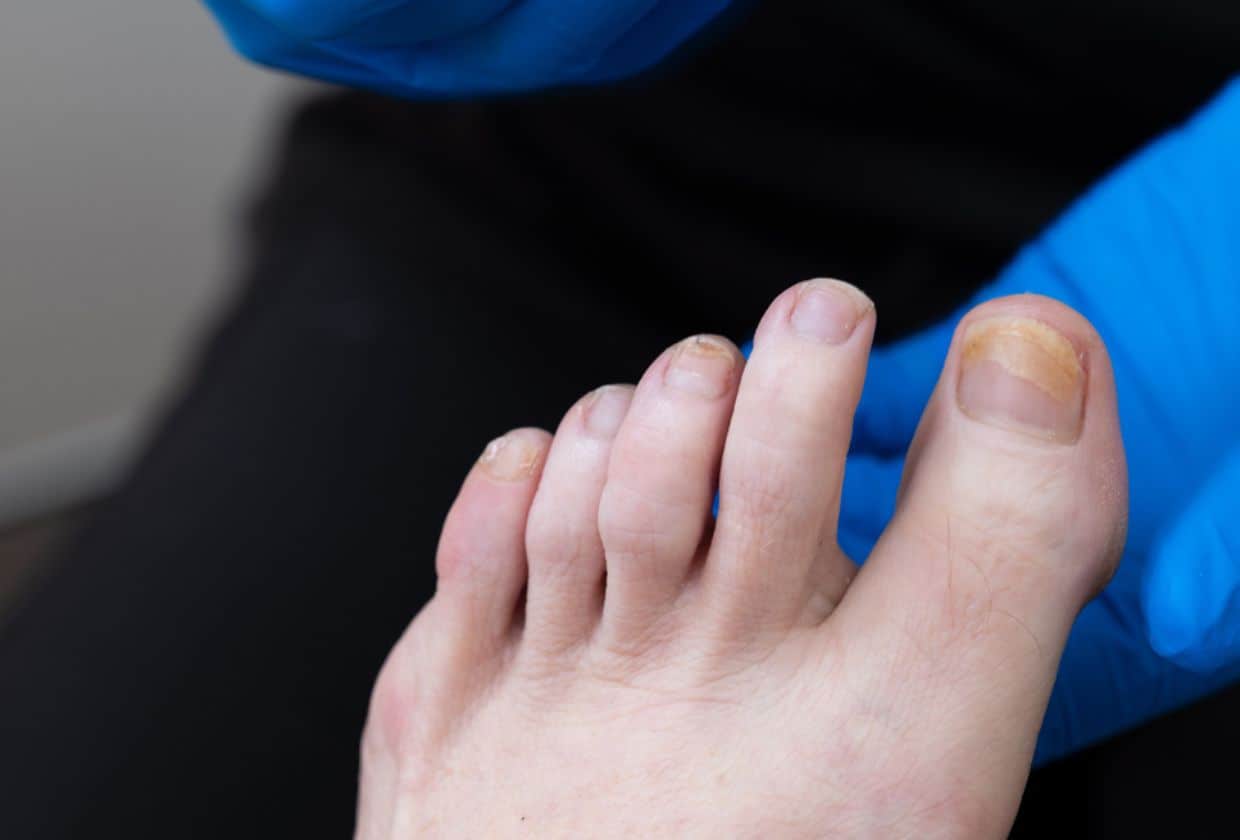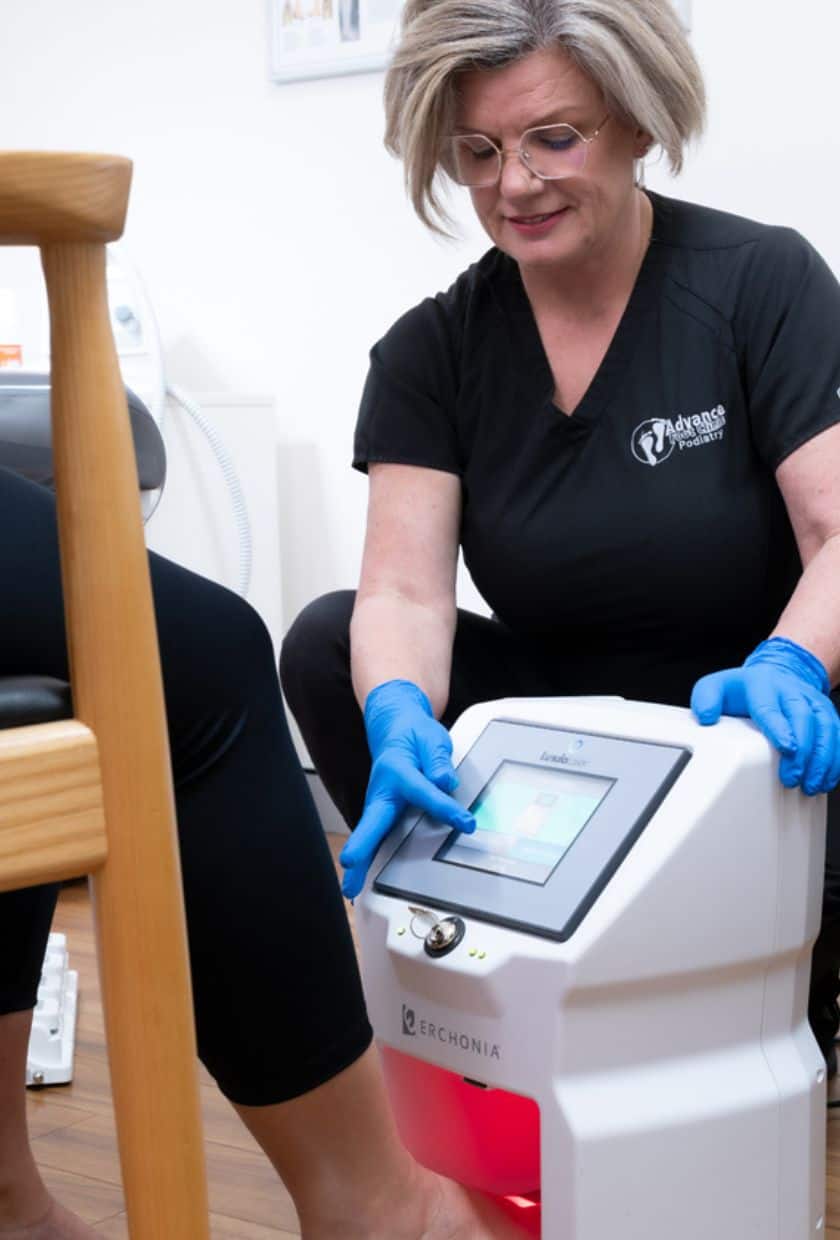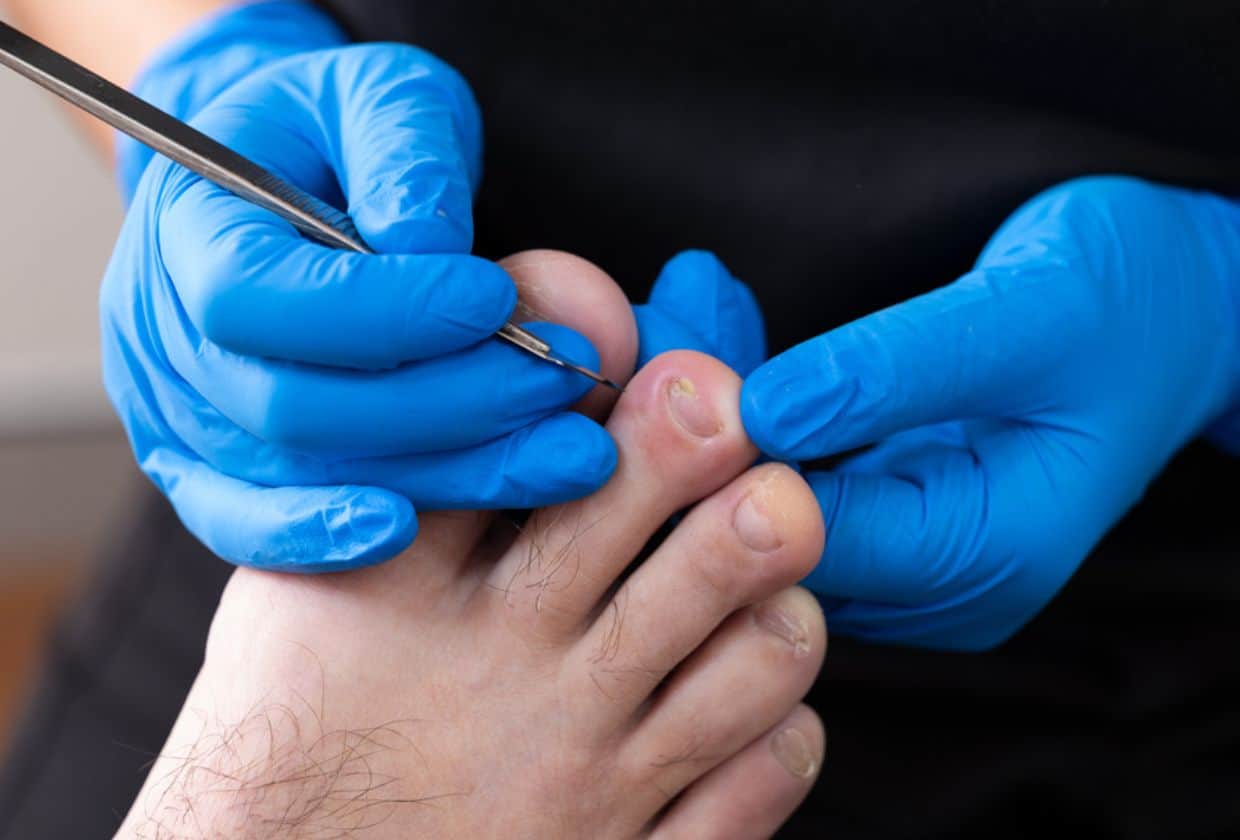Fungal nails – medically known as onychomycosis – are more common than you might think. And yes, they can be frustrating. If you’re dealing with thick, discoloured or crumbly toenails, there’s a chance it’s caused by a fungal nail infection. At Advance Foot Clinic, we’re here to make things clearer – and healthier – one toenail at a time.

Fungus loves a warm, damp environment – think moist shoes, public showers or swimming pools. A small nail injury, exposure to tinea pedis (that’s athlete’s foot) or sharing nail clippers at a nail salon can give the fungus the opening it needs to settle into the nail bed.
Some common causes:
Fungi thrive in moist environments, and once they take hold, they can be stubborn to get rid of without proper care.
Symptoms to keep an eye out for include:
There are also different types of fungal nail infections, such as:
Sometimes, the infection spreads to other toenails or the surrounding skin, causing more issues. In severe cases, it may lead to permanent damage to the nail plate or require medical removal of the infected nail.

Fungal nail infections don’t discriminate, but certain people are more at risk:
Even people who are very active or frequently wear shoes for extended periods can be more susceptible.
Good habits go a long way. To help prevent fungal nail infections:

No matter how long you’ve had fungal nails, there’s help. Your podiatrist will guide you through the best approach for your situation. Options include:

Fungal nail diagnosis starts with a visit to your podiatrist. We’ll do a physical examination, chat through your nail history, and potentially take a sample (nail clippings) to confirm what we’re dealing with.
This step helps us distinguish fungal infections from other types of nail infections, such as a bacterial infection, and tailor the effective treatment to you.
Getting rid of nail fungus is step one. Keeping it away is step two. Here’s how:
With time and the right approach, your new nail can grow back clear and strong. And yes, you can feel good showing off your toes again.

The fastest approach depends on the severity. For stubborn or widespread infections, oral medications or laser treatment often work best. Mild cases may respond well to consistent topical treatments. Your podiatrist is best placed to recommend the best fungal nail treatment for your situation.
Some people try home remedies like vinegar soaks or tea tree oil, but their success is mixed. It’s best to speak with a podiatrist first so you don’t waste time – or make it worse.
Yes, fungal nail infections can be contagious. That’s why avoiding shared nail tools and being cautious in communal spaces is so important.
It can, especially if you don’t follow good foot hygiene. That’s why we emphasise foot care, proper shoe rotation and ongoing monitoring after treatment.
Yes, though it’s less common. Children with tinea pedis or who spend time in locker rooms or swimming pools may still be at risk.
Not usually. In severe cases, nail removal may be necessary, but most people recover with less invasive treatments.
If you’ve been hiding your toenails, now’s the time to take action. Whether it’s your first infection or a recurring issue, our friendly podiatry team is here to help.
Book your appointment online or call 1300 76 33 66 today to experience our expert podiatry services at any of our five clinic locations.